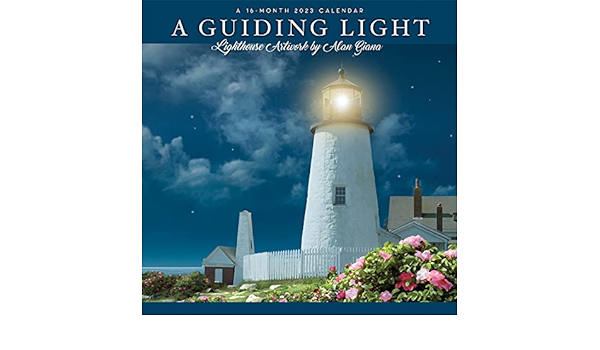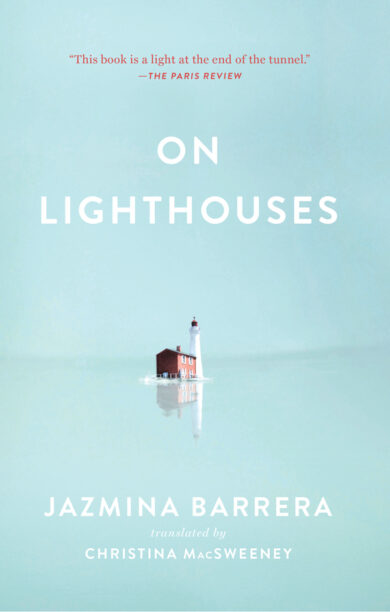Table of Contents
Lighthouses, with their towering structures and beaming lights, have long held a prominent place in the world of literature and art. Beyond their practical purpose as navigational aids, lighthouses have captured the imagination of writers and artists, serving as powerful symbols and evocative representations in various creative works. In this article, we delve into the rich world of lighthouses in literature and art, exploring the profound symbolism and captivating representations they offer.
Lighthouses, those sentinel structures standing tall against the relentless sea, have not only guided mariners but also inspired some of the most profound and evocative works in literature and art. Beyond their utilitarian function, they have etched themselves into the human psyche as potent symbols of hope, isolation, and the indomitable spirit of the human endeavor.
In literature, lighthouses have been central characters in many timeless tales. They serve as both beacons of salvation and solitary outposts in the vast expanse of the ocean. From Virginia Woolf’s “To the Lighthouse,” where the lighthouse stands as a metaphor for self-discovery, to Edgar Allan Poe’s eerie “The Light-House,” where it becomes the setting for a chilling story of isolation and madness, these structures have played a pivotal role in storytelling, representing themes of longing, enlightenment, and existential contemplation.
In art, lighthouses have been subjects of fascination for painters and photographers alike. The interplay of light and shadow, the contrast between the sturdy structure and the ever-changing sea, and the sense of isolation and resilience they exude have provided endless inspiration. Renowned artists like Winslow Homer and Edward Hopper have captured the haunting beauty and profound symbolism of lighthouses in their works, inviting viewers to contemplate the juxtaposition of human presence against the unforgiving forces of nature.
Lighthouses have transcended their practicality to become metaphors for the human condition. They symbolize the human spirit’s eternal quest for guidance and meaning in the face of life’s storms and uncertainties. They stand as reminders of the solitude often required for self-discovery and introspection. In literature and art, they invite us to explore the depths of our own souls and navigate the tumultuous seas of existence.
In this article, we embark on a captivating journey through the world of lighthouses in literature and art. We delve into the profound symbolism, the evocative representations, and the enduring allure they hold for creative minds. Join us as we unravel the mysteries and meanings woven into the fabric of these iconic maritime sentinels, and discover the timeless stories they continue to tell in the realms of imagination and expression.
Looking for more insights? You’ll find them right here in our extended coverage: English Language Arts and Literacy
Guiding Lights in Literature
Lighthouses have frequently appeared in literature as potent symbols of hope, guidance, and salvation. They serve as beacons in the darkness, both literally and metaphorically. Some notable examples include:
nullLooking for more insights? You’ll find them right here in our extended coverage: On Lighthouses | Center for the Art of Translation | Two Lines Press

Lighthouses as Artistic Inspiration
Lighthouses have been a favorite subject for artists across various mediums, from painting to photography, and even film. Their striking visual presence, juxtaposed against the natural beauty of coastal landscapes, has made them an enduring source of inspiration.
Lighthouses, with their timeless allure and powerful symbolism, have captivated the imaginations of artists throughout history. These iconic structures have transcended their utilitarian purpose to become not only navigational aids but also muses for creativity in a multitude of artistic expressions.
Painting: Lighthouses have graced the canvases of countless painters, both renowned and aspiring. Artists have been drawn to the stark contrast between the solid, often solitary, structure of the lighthouse and the ever-changing, ethereal moods of the sea and sky. The play of light and shadow on lighthouses, especially during twilight and storms, has provided an endless source of inspiration for painters seeking to capture the essence of these coastal sentinels.
Photography: Lighthouses are a favorite subject for photographers seeking to capture their unique character and the drama of their surroundings. Photographers often venture to remote coastal locations, waiting for the perfect moment when the lighthouse is bathed in the soft glow of sunrise or illuminated by the warm hues of sunset. Lighthouse photography has become a genre in itself, with enthusiasts and professionals alike attempting to convey the mystique and grandeur of these structures through their lenses.
Literature: Lighthouses have featured prominently in literature, from classic novels to contemporary fiction. Authors have used lighthouses as symbols of guidance, hope, and isolation. These structures often serve as metaphors for the human condition, representing the desire for a guiding light in times of uncertainty or the solitary nature of the human experience.
Film: Lighthouses have made their way onto the silver screen, playing roles in both classic and modern films. Their cinematic presence adds depth and symbolism to storytelling. Lighthouses have been portrayed as beacons of safety, settings for romantic encounters, or eerie backdrops for suspenseful tales. Their visual impact on film often enhances the emotional resonance of the story.
Architecture and Design: Beyond the realm of fine arts, lighthouses have influenced architecture and design. Their iconic profiles and distinctive color schemes have inspired the creation of lighthouse-themed structures and decor, from coastal homes and hotels to lamps and furniture. The architectural elegance of lighthouses has left a mark on the built environment, echoing their enduring aesthetic appeal.
Music and Poetry: Lighthouses have found their way into the lyrical verses of poets and the melodies of musicians. Their towering presence and the solitude of their keepers have provided material for poignant poems and songs that explore themes of longing, navigation, and the passage of time. The haunting beauty of lighthouses is often evoked in the words and notes of creative artists.
Tourist Attractions: The artistic allure of lighthouses has contributed to their status as popular tourist attractions. Travelers seek not only to admire the architecture and history of these structures but also to experience the sense of wonder and inspiration that artists have long associated with them. Visitors often come armed with cameras and sketchbooks, hoping to capture their own interpretation of the lighthouse’s essence.
In essence, lighthouses occupy a unique place in the world of art and culture. They embody a sense of mystery, romance, and adventure that has sparked the creativity of artists across diverse mediums. Through the eyes of painters, photographers, writers, and filmmakers, lighthouses continue to illuminate our collective imagination, inviting us to explore the profound beauty and symbolism they represent in our shared human experience.
For additional details, consider exploring the related content available here Guiding Light: The Traditional Beauty and Symbolism of Lighthouse …

Metaphorical Significance
Lighthouses carry a profound metaphorical significance in literature and art. They symbolize guidance, illumination, and the human spirit’s indomitable quest for meaning and direction. Lighthouses often represent the dichotomy between isolation and connection, safety and danger, and the ephemeral and the enduring.
In both literature and art, lighthouses serve as a powerful reminder of our need for guidance and our yearning for something greater than ourselves. They stand as beacons of inspiration, inviting us to explore the depths of human emotion and the mysteries of existence.
Lighthouses, with their towering presence and unwavering beacons, extend far beyond their physical existence; they resonate deeply in the realms of literature and art, carrying profound metaphorical significance. These iconic structures are imbued with layers of symbolism, each representing essential facets of the human experience and our relentless pursuit of purpose and direction.
At their core, lighthouses symbolize guidance and illumination. They stand as metaphors for the light of knowledge, wisdom, and insight that cuts through the darkness of ignorance and uncertainty. In literature and art, they often serve as potent symbols of mentorship, a guiding force that leads characters and viewers toward self-discovery and enlightenment.
Moreover, lighthouses encapsulate the indomitable spirit of humanity’s quest for meaning and direction. In the face of adversity and the unknown, these beacons offer a glimmer of hope, reminding us that even in the most challenging circumstances, there is a path to follow—a course toward safety, clarity, and purpose.
The dichotomies embodied by lighthouses add depth to their metaphorical significance. They represent the interplay between isolation and connection, reminding us that, while the keepers of these solitary structures may be physically remote, their mission is to forge a connection with distant travelers, offering solace and assurance in the midst of vast and unpredictable oceans.
Lighthouses also embody the juxtaposition of safety and danger. They are both a refuge and a warning, serving as guardians against treacherous waters while standing in the midst of them. In literature and art, this duality often serves as a reflection of the human condition, where we must navigate the delicate balance between security and the unknown.
Furthermore, lighthouses evoke the contrast between the ephemeral and the enduring. They weather the harshest of elements, standing as timeless sentinels of the coast, while the tides of time wash over them. In this, they become symbols of perseverance and the enduring legacy of human endeavor.
In both literature and art, lighthouses invite contemplation and exploration of the profound complexities of human existence. They serve as beacons of inspiration, urging us to embark on journeys of self-discovery, to navigate the seas of our emotions, and to seek the answers to life’s profound questions. Lighthouses stand as timeless reminders that, in the vast expanse of existence, our yearning for guidance and meaning is a universal, enduring, and deeply human pursuit.
To delve further into this matter, we encourage you to check out the additional resources provided here: To the Lighthouse: Symbols | SparkNotes

Lighthouses in literature and art are more than mere structures; they are symbols that resonate deeply with the human experience. Whether portrayed as guiding lights, mystical portals, or solitary beacons in the night, lighthouses capture our imagination and invite us to ponder the complexities of life and the enduring quest for meaning. Through the lens of creativity, lighthouses continue to shine brightly, illuminating the landscapes of our collective consciousness and inspiring countless works of literary and artistic expression.
Lighthouses in literature and art hold a unique place in our cultural landscape. They transcend their physical presence as maritime aids and become powerful symbols that touch the very core of the human experience. In the realms of imagination and creativity, lighthouses take on multifaceted roles that resonate deeply with our souls.
As guiding lights, lighthouses often serve as metaphors for clarity and direction in the face of uncertainty. In literature, they become symbols of hope, offering solace and assurance to characters navigating the turbulent waters of life. Much like the way they steer ships away from danger, lighthouses guide protagonists through the stormy seas of their own inner conflicts. They remind us that even in the darkest of times, there are beacons of light to lead us toward safe harbors.
In art, lighthouses transform into mystical portals, beckoning us to explore the unknown. They become gateways to otherworldly realms, where the boundary between reality and imagination blurs. Artists often use lighthouses as symbols of transcendence, inviting viewers to embark on journeys of self-discovery and transformation. The solitary beam of light cutting through the darkness becomes a metaphor for the illumination of the human spirit.
Lighthouses also embody solitude and isolation, standing as solitary beacons in the night. In literature and art, they become symbols of the human condition, reflecting our inherent sense of longing and introspection. These solitary sentinels invite us to ponder the complexities of life, the meaning of our existence, and the pursuit of connection in a vast and often mysterious world.
Through the lens of creativity, lighthouses continue to shine brightly in our collective consciousness. They inspire countless works of literary and artistic expression, from novels and poems to paintings and photographs. Artists and writers draw upon the rich symbolism of lighthouses to convey a wide range of emotions and themes, from the triumph of the human spirit to the depths of existential contemplation.
In essence, lighthouses in literature and art are more than symbols; they are conduits to the depths of human experience and imagination. They invite us to embark on inner and outer journeys, to seek meaning and connection, and to explore the intricate interplay between light and darkness in our lives. In their enduring presence across the creative landscape, lighthouses remind us that the human spirit is, like their beams of light, a source of enduring illumination and inspiration.
Don’t stop here; you can continue your exploration by following this link for more details: To the Lighthouse: Symbols | SparkNotes
More links
To expand your knowledge on this subject, make sure to read on at this location: On Lighthouses | Center for the Art of Translation | Two Lines Press
